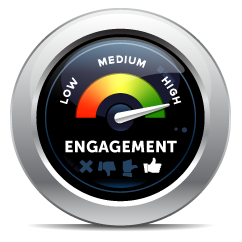Measuring salespeople’s performance is a journey, not a destination. Measuring sales results is step one. Step two is measuring sales activity. Step three is the when CRM measures engagement.
For most, just knowing the number of leads generated or calls made is a huge step forward.If you’re not measuring basic things like this, then start now please! In fact, here’s an article about very simple and basic things to measure about your sales activity that’s a great place to start.
At this point in your journey, you’ll be able to do some very powerful things! You can see who’s trying and who is not. You can compare salespeople to each other based on top of the funnel activity, rather than what they’ve sold. This is HUGE! Measuring the top of the funnel let’s you see problems before it’s too late. If you’re only metric is actual sales, then at the end of the month or the quarter, you’ll know who hit quota and who did not. However, you’ll have no idea how or why? What behaviors led the top producers to success? What were the low performers not doing? And without that knowledge, all you can do is give them a big speech and how things change. Something simple like not making enough prospecting calls will have already caused you to miss your goal for the month or the quarter and you’ll be hoping it doesn’t again.
Here’s a screenshot of a typical customer record setup to measure basic sales activity.
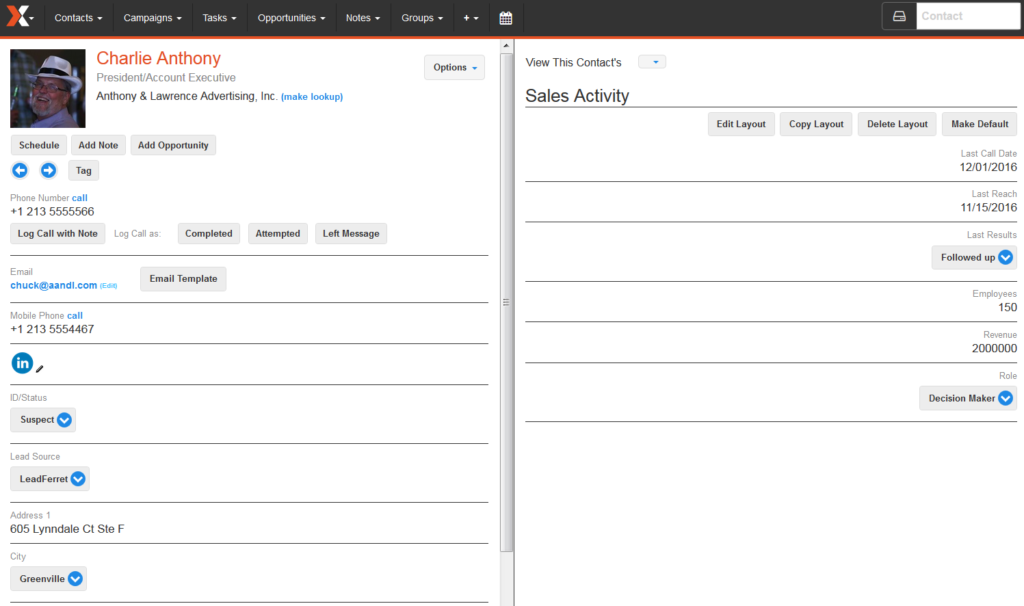
If your team is tracking this kind of information, your CRM can give you dashboards like this:
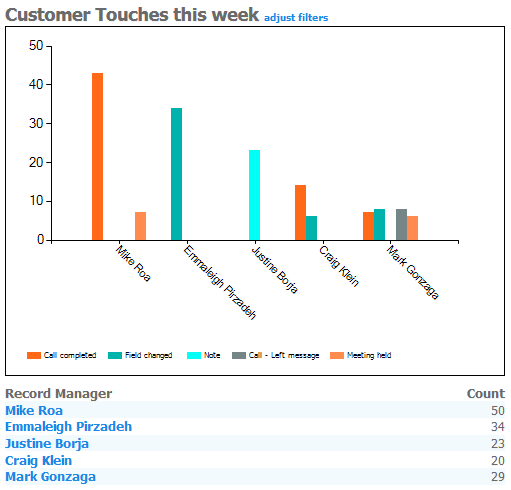
Again, this is a big step forward vs. just tracking sales results. However, once you’ve gotten to this point and begun to manage and coach salespeople based on this kind of top of the funnel activity, you realize that there’s a deeper level that’s important.
In the end, all calls are not the same. All leads are not the same. A lead can be “pre-qualified” based on its source or by information provided by the lead but, only after a conversation has taken place do you really know the things that matter. These things can include basic demographic/factual information like purchase timeline, budget, current vendor and other things that could be captured in a web form. Of course, this kind of information is not often captured initially because the more boxes the lead has to complete on your site, the fewer leads you get. So, it’s down to the salesperson to get the prospect engaged in a conversation and get these answers.
And, it’s the salesperson’s job to establish a relationship. To build trust and establish credibility. A lead might tell you that they need a solution this month and their budget is $50,000 but, that doesn’t mean the salesperson really connected with them or set your brand apart from the rest.
There are questions that really can’t be asked if some level of trust and rapport has been established. Those are the questions that top producers always get asked. The questions that you, as the sales manager, always ask the salesperson when they’re telling you about the opportunity.
What if you measured engagement?
Here’s a dashboard of Sales Pain (what their unique problem is that demands/justifies an expenditure). You
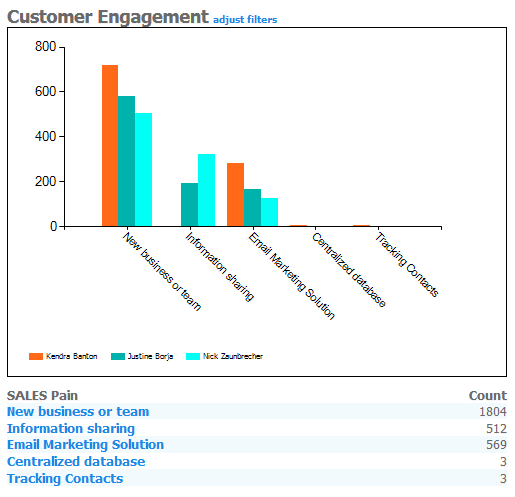
don’t get an answer to this unless you’re having a good solid conversation.
Of course, there are unique things in your business that you ask that you may want to measure.
Now you’re not just tracking how many calls got made, but also how many of them were valuable conversations. How many of those people are likely to pick up the phone next time the salesperson calls?
To start this type of measurement, simply adjust the typical customer record fields to include places to record the answers to those more in-depth questions. Below is an example.
Start by identifying 2 or 3 questions that you or your top producer always seem to ask and know about their clients that new reps would never think to ask. Add those to your online CRM system. Compare salespeople logging lots of activity with their success at getting these questions answered.
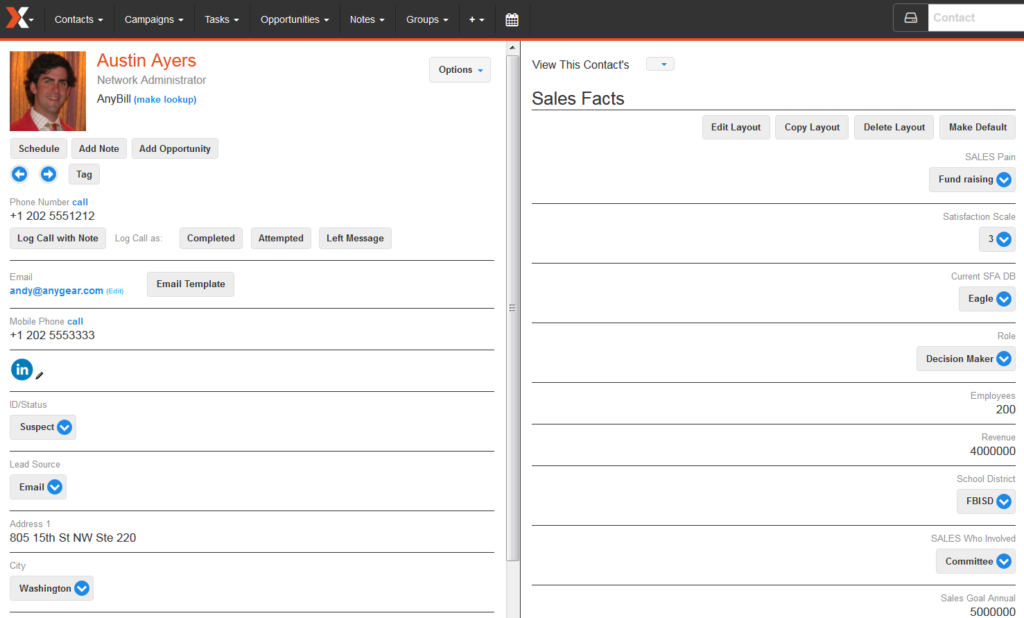
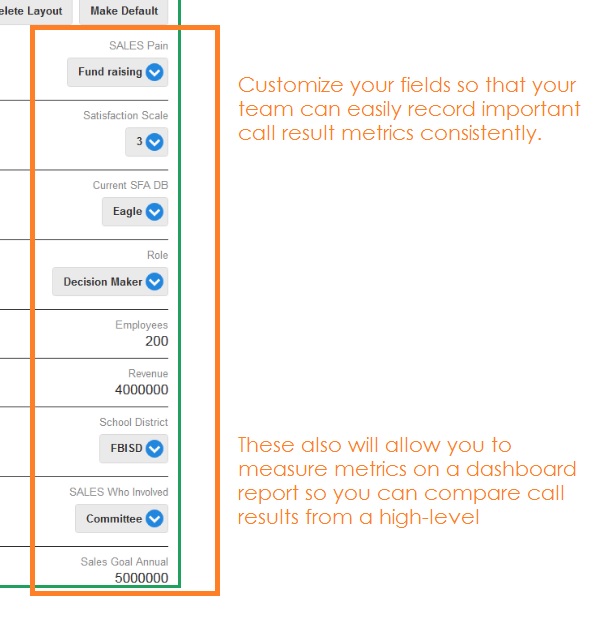
Those with high activity and low customer engagement need some coaching. Those with lower activity and high customer engagement are probably your top producers and may be getting fat on established accounts.
Whatever you find, knowing which customers you have real relationships with and which salespeople are good at building them is invaluable.

